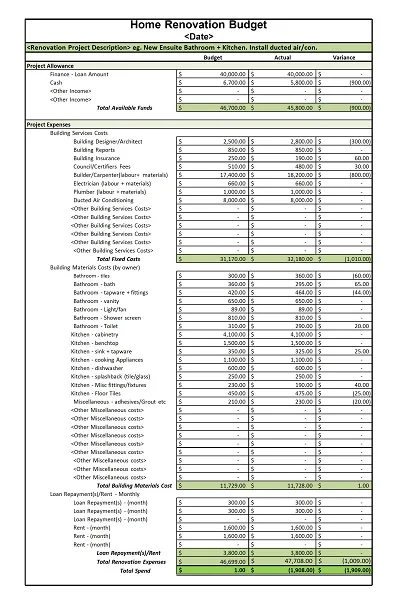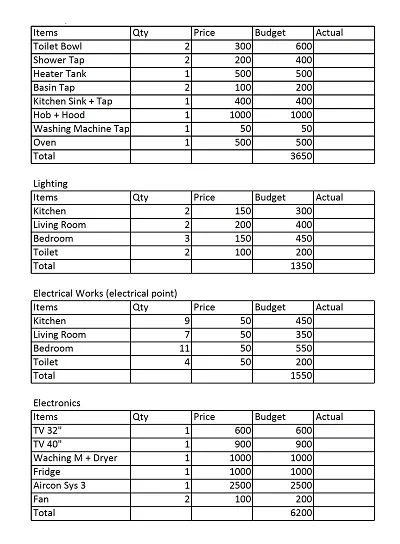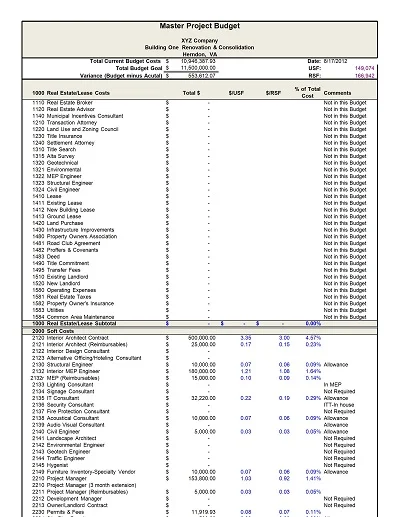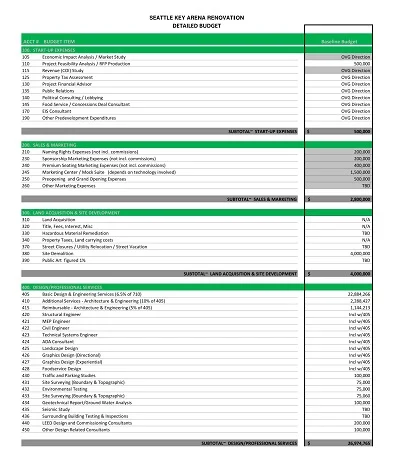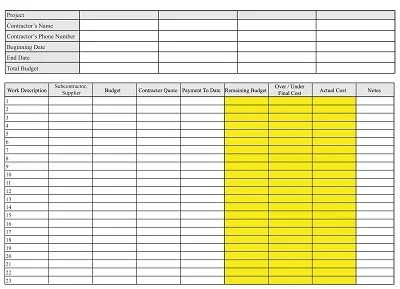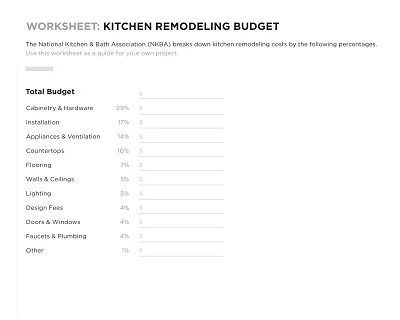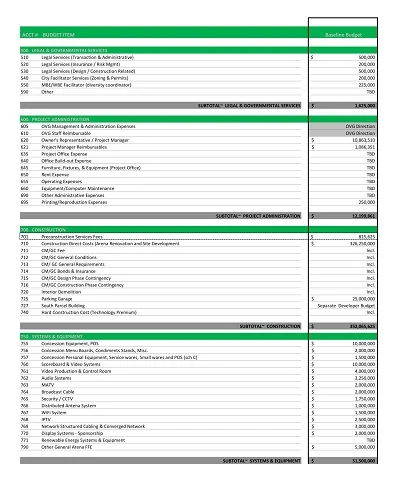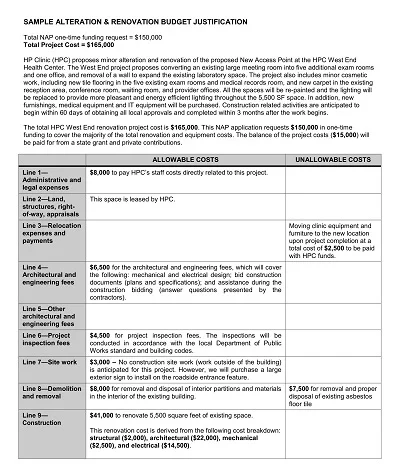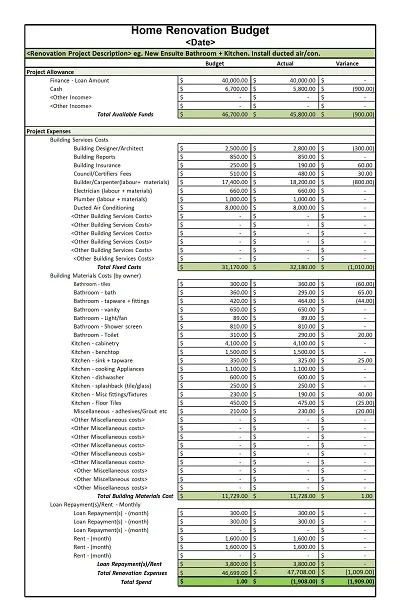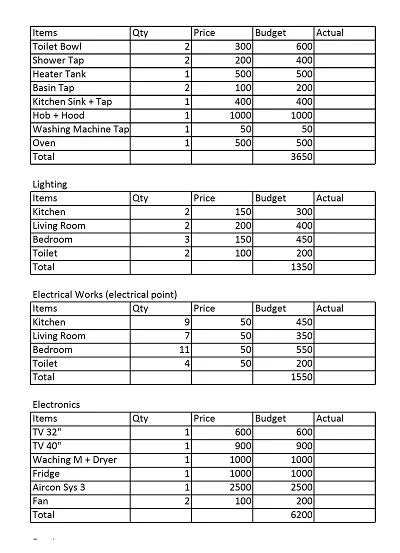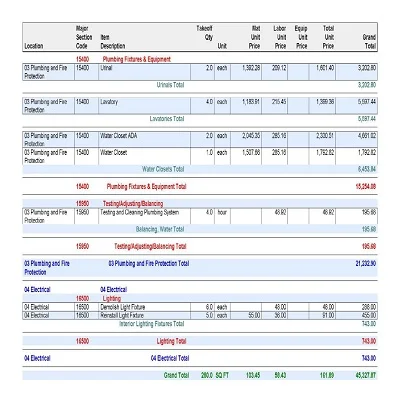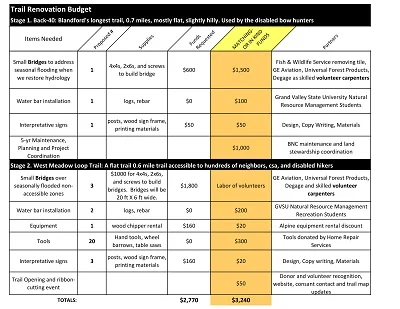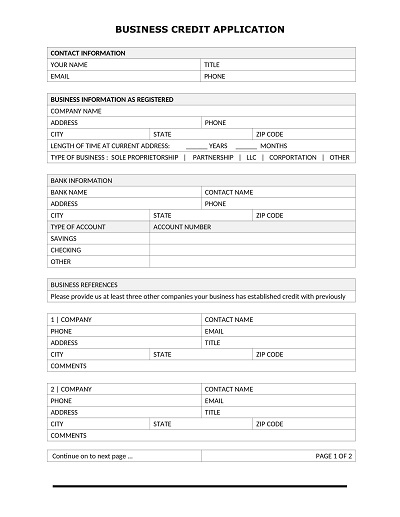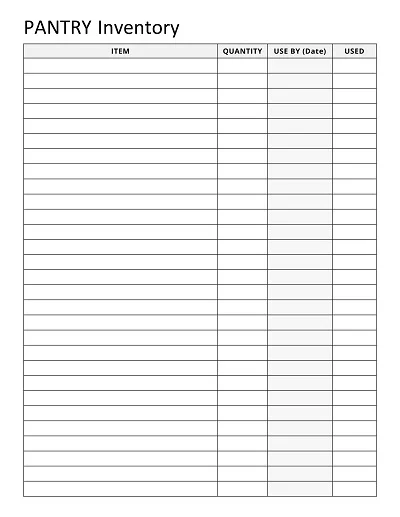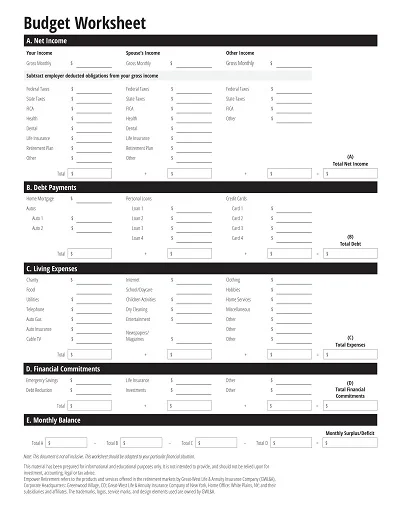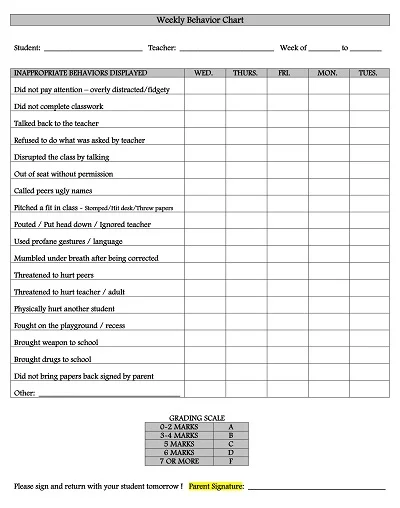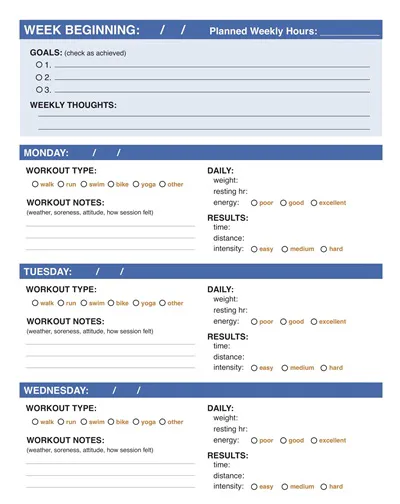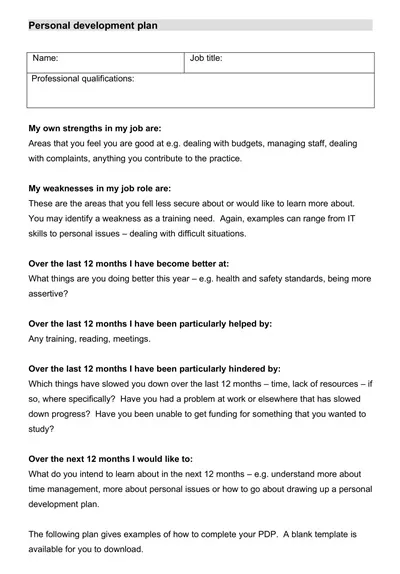A Home Renovation Budget Template is a regulatory tool aimed at helping homeowners plan out how the overall cost of the renovation work will be dealt with when budgeting. This provides expected costs and takes time to make real for the various renovation categories, including the materials used, workforce, and permits.
The template takes a snapshot of all expenses; this saves one from a wad spending notifying him or her on how the money should be spent. It often has fields that can be customized to fit particular projects, and usually, it is as simple as a spreadsheet or as complicated as setting up an entire software tool. Applying this template may prevent overpreparing for a particular renovation endeavour and create more efficient plans.
Download Free Home Renovation Budget Templates
What is a Home Renovation Budget?
It is important to note that a Home Renovation Budget is a plan or projection of financial, time, and human resources needed to alter or improve homes. They consider the cost charged for any items, including the materials used, labour, permits for the renovation, and any other costs that might be required.
This budget guides homeowners in checking their yields and ensuring they don’t overstrain themselves while renovating homes. From cost control, one gets a plan of the project’s financial aspect and the budgets for tracking the cost within the allocated financial limits.
Benefits of Planning Your Home Renovation Budget
Here are some benefits of Planning Your Home Renovation Budget:
Ensures Financial Control
As best observed from the following, they are less prone to poor hiring decisions Hence when planning their home renovation budget, most homeowners are more disciplined. This way, you avoid spending too much money and ensure that you appropriately spend your money in ineffective areas of a renovation project.
Prioritizes Spending
In the financial management process, extra concern for spending is required through budget preparation. The activities differ between the essential renovations and the desired enhancements; thus, it ensures that the important projects with significant returns and usability get the priority they deserve.
Anticipates Unexpected Costs
For example, it is always smart to build a margin for uncontemplated expenditures as a part of a strict budgeting plan. This is helpful to make sure that there are no formation stoppages due to some costs that are found to be unplanned along the way.
Facilitates Contractor Negotiations
Lenders are usually more willing to negotiate with contractors where one understands the budget. It clearly estimates how much you can spend on labour and materials and gain access to the most suitable services.
Maximizes Investment
Finally, a strategic budget can capture more value or ‘bang for your bucks. ’ Homeowners have to ensure they allocate their money on items which would positively affect the overall value of their homes or if it’s remodelling then paint or install more kitchens or more basements etc, as they tend to benefit when the homeowner is selling the house.
Key Components of a Home Renovation Budget
Preparing a scheme involving resource utilisation is essential when seeking to embark on a home renovation project. The key components of a home renovation budget should include:
- Material Costs: Everything has something to do with a building, including the price of wood, paint, and tiles. Making provisions for more than the estimated area size or items is always prudent.
- Labour Expenses: A range of remunerations that would otherwise be paid to specialized workers like electricians, plumbers, carpenters, etc. Ensure that you factor in the time you expect the contractor or freelancer to spend on the job and the level of specialization the work requires.
- Permits and Inspection Fees: Often, these are caressed out and essential for ensuring that your renovated building conforms to the governing laws of your region.
- Contingency Fund: This is considered a contingency budget, generally ranging from 10 – 20% of the budget since additional expenses will always crop up during renovations.
- Design or Architectural Services: For instance, if your project requires professional designs or architectural drawings.
By considering these factors, one will be able to minimize the extra cash being spent and also be able to see that the renovation is conducted appropriately.
How to Create a Home Renovation Budget Template
It is possible to develop a guideline for testing plans when designing a home renovation budget that will guide what to spend to contain the cost. Here are the steps to creating an effective budget template:
Determine Your Total Budget
- Start by setting the overall budget for the renovation that you will not go over.
- Other expenses should also be allocated though you should only allocate 10-20% of your overall estimates for them.
List Down All Project Elements
- Subdivide the renovation into more minor phases or sub-projects to make them more manageable (e.g., plumbing, electric work, painting).
- Distribute a rough cost estimate for each element based on quotes received or the standard cost of something.
Allocate Budget per Task
- Spread the available total amount appropriately to the various tasks in proportion to the cost estimates.
- It is important that high-priority projects are well-resourced and restricted if low-priority areas are overfunded.
If we focus on the timeline and the cash flow projection, we can determine what will occur.
Timeline and Cash Flow Projection
- Develop a cash flow plan to help the firm determine the period or phase at which it will require cash for each phase of a particular project.
- The second step is ensuring that one keeps track of actual costs as the budget reallocates.
Keep Track of Actual Costs
- If actual costs exceed estimates, rearrange the budget split to remain within the everyday spending range for completing the remaining work.
Regularly Review and Update
- On the way to establishing the budget template, check your budget plan frequently to adjust your latest cost, timeline, and project changes.
- Be transparent and adaptive when budgeting for remodelling to ensure all the proper safety measures are met.
Following the above steps, therefore, makes it possible to develop a strategy that will create an efficient and practical budget that will not lead to incurring unnecessary expenses aimed at making the homes more livable when undertaking a home renovation.
Tips for Using the Home Renovation Budget Template
The home renovation budget template can help organize renovation work much more efficiently. Keep the following tips in mind:
- Identify Priorities: It is crucial to identify the core changes before going to the template and then distribute your money on these categories needed for the renovations.
- Overestimate Expenses: In order not to hold the actual costs of exaggerated expectations, it should be necessary to provide a backup of no less than 10-15%.
- Track Prices Regularly: If it is used to estimate costs for a particular product or service, update the individual costs in the template with the actual expenses as you incur them to avoid going over the set budget.
- Consider DIY: As often as possible, it is recommended that one look to decrease the labour cost involved. Record it in the template if there is any likelihood of saving such expenses.
- Review Regularly: To avoid overspending or acting in counterproductive ways, remember to check the budget template frequently.

